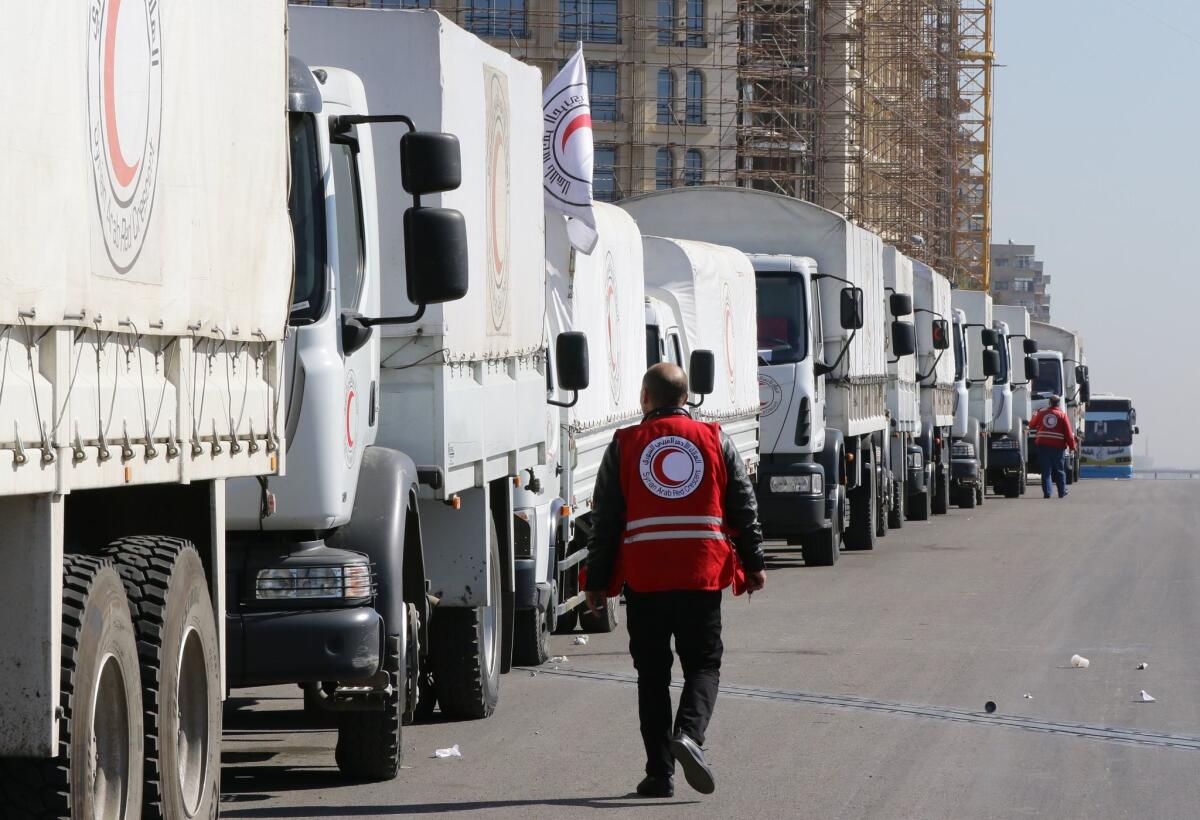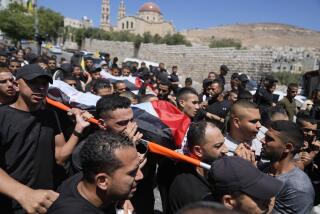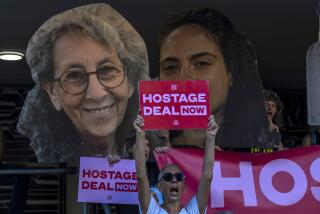Another deal announced aimed at stopping Syrian civil war

A Red Crescent convoy prepares to leave Damascus for the besieged areas of Madaya and Zabadani.
Secretary of State John F. Kerry announced Monday that “final arrangements” have been made by U.S. and Russian diplomats for a cessation of hostilities to take effect in Syria by week’s end.
It was the second such announcement in less than two weeks, and Kerry’s comments were met with the same skepticism as earlier efforts to halt the deadly violence ripping Syria apart and spreading across its borders.
“We are all aware of the significant challenges ahead,” Kerry said in a statement. “This is a moment of promise, but the fulfillment of that promise depends on actions.”
Despite working out some details, the latest proposal contains some of the same flaws as the last version.
Most importantly, the principal warring parties — the government of Syrian President Bashar Assad and the militant factions battling to oust him — are not yet signatories to the agreement.
In addition, U.S.-led coalition airstrikes, and separate Russian airstrikes, may continue against Islamic State, Al Nusra Front and “other terrorist organizations” as designated by the United Nations Security Council.
In the past, Russian warplanes have repeatedly hit targets that Moscow says are terrorist groups, most recently in the besieged city of Aleppo. But Washington says those groups are legitimate anti-Assad opposition fighters, some backed by the U.S. and its allies.
Syria said Monday that it would continue to attack groups it considered to be terrorists, the broad term it often uses to describe all of its political or military opponents.
Indeed, the diplomatic breakthrough passed with little effect in Syria, where pro-government troops continued their push to secure border areas in the northwestern province of Latakia, seizing control of a string of villages in the mountains, while also continuing their weeks-long offensive in Aleppo.
A watchdog group, the pro-opposition Syrian Observatory for Human Rights, also reported that Islamic State militants fought alongside other Islamist rebels to cut off a strategic supply road in Aleppo province. The road, which runs through the village of Khanaser, about 30 miles southeast of Aleppo, is an important lifeline for government-held areas of Aleppo.
Rebels also skirmished with a Kurdish-dominated coalition of militias, the Syrian Democratic Forces, in northern Aleppo.
A cessation of hostilities, which is less comprehensive than a cease-fire, was first declared by the U.S., Russia and other world powers on Feb. 11, to take effect in a week.
That deadline was missed and another frenzy of diplomatic talks followed.
Monday’s deal was sealed after President Obama spoke by telephone to Russian President Vladimir Putin, according to the White House and Moscow’s news agency Tass.
“This is going to be difficult to implement,” White House Press Secretary Josh Earnest acknowledged to reporters.
Kerry said a letup in fighting would allow additional routes to open for the delivery of badly needed humanitarian aid throughout Syria. That, too, had been part of the earlier agreement, but aid only began to trickle in.
In a joint U.S.-Russia statement, some details were outlined on how the deal would be played out in the battlefield:
The Syrian army and its allies, as well as all opposition groups, must confirm acceptance of the cessation, reporting to the U.S. or Russia, by midnight Friday.
The participants agree to “refrain from acquiring or seeking to acquire territory” but are allowed to use “proportionate” force “when responding in self-defense.” They also agree to grant “rapid, unhindered and sustained access” to humanitarian agencies for the distribution of food, medicine and other aid to “all people in need.”
To handle possible violations, the U.S. and Russia will set up a “communication hotline” and make “every effort … [to] rapidly de-escalate tensions.” “Non-forcible means should be exhausted whenever possible before resorting to use of force,” the agreement says.
The deal does not spell out any kind of on-the-ground monitoring or verification force.
“Obviously there are still pieces of this that need to be fleshed out,” State Department spokesman Mark Toner said in Washington.
Asked how this agreement would prevent Russia from bombing moderate opponents on behalf of Assad, Toner added: “Ultimately, it’s up to the parties to buy into this, or not, whether it’s Russia or others. You have to test the commitment or goodwill … of everyone who is a stakeholder in this process.”
He also acknowledged that it was all but certain that the next round of peace talks scheduled for Thursday would not take place. An earlier attempted round collapsed.
Special correspondent Nabih Bulos contributed to this report.
For more news about global affairs, follow @TracyKWilkinson
ALSO
Islamic State frees Syrian Christians held since 2015 for ransom
The Syrian cease-fire is unlikely to lure many refugees home
60 million refugees: a crisis that has outgrown its 65-year-old solution
More to Read
Sign up for Essential California
The most important California stories and recommendations in your inbox every morning.
You may occasionally receive promotional content from the Los Angeles Times.










